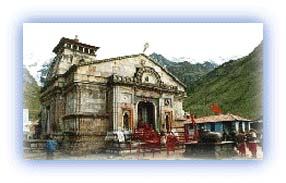Garhwal himalayas
General info
· Uttarakhand
· Eastern Garhwal
· Western Garhwal
Other Places of Interest
· Uttarkashi
People
· Jaunsaries
Tradition & culture
Livelihood
· Marchas
· Tradition & culture
· Bhotias
Religion
· Gods and Goddesses
Flora and Fauna
· Wildlife

![]()
|
Jadhs The Jadhs are a tribal community inhabiting the cold dry tracts of Uttarkashi District in Uttar Pradesh. They live in two main villages -- Nelang and Jadhang -- both situated at an elevation of about 3,400 m. Communication systems are poor and this tract remains cut-off from the rest of the country for long periods during the cold season. |
Garhwal's People in the 1930s. (Download Realplayer) |
Tradition and Culture
The Jadhs are primarily semi-nomadic shepherds. They graze
their sheep and goats in the upper Jahnvi Valley during the
warm summer months when alpine vegetation is in full bloom. As
autumn begins, they move down to the lower hills, reaching the
forests near Rishikesh just as winter begins to set in.
 |
| The Kedarnath Temple Credit: Raj Shirole |
Each Jadh family owns 200 to 400 animals and the number of livestock owned by them is a measure of their wealth and economic condition.
In the past, the entire community used to migrate from these high altitude villages in winter. However, now some families and a few shopkeepers stay back at a settlement called Dunda while the rest of them move to the forests around Rishikesh. They begin to move back to their homes in spring.
This community has close social and economic ties with the people living in the adjoining tracts of Himachal Pradesh and other parts of Uttarkashi. Over the years they have evolved a vague system of castes under which they call themselves Rajputs and marry with other such communities of Uttarkashi. Most Jadhs consider themselves to belong to a superior caste and the task of weaving the wool is left to the Kolis who are considered to be of a lower caste. A group of Kolis even accompany the Jadhs on their annual winter migration to the plains.
In the past the Jadhs also traded with the Tibetans across the high Himalayas. However this has stopped after the Indo-China war of 1962. The Jadhs used to take items such as cotton, grains, metal, oil seeds and sugar to various Tibetan markets across the border and brought back salt, wool and borax to be sold in the towns of Uttarkashi and Bushahr. The traditional route to Tibet lies across the Thang La (5,050 m) and Tang Choke La (5,400 m).
The Jadhs have typical Mongoloid features and speak a Tibetan dialect. They may also speak Garhwali and Pahari (language of Himachal Pradesh, India). It is believed that their ancestors came to this tract from Tibet across the high mountain passes in search of warmer lands in the south.
Livelihood
The main source of livelihood for the Jadhs is animal
husbandry. Other occupations include agriculture and allied
activities, trade, business, unskilled and semi-skilled labor
and government service.
All rights reserved